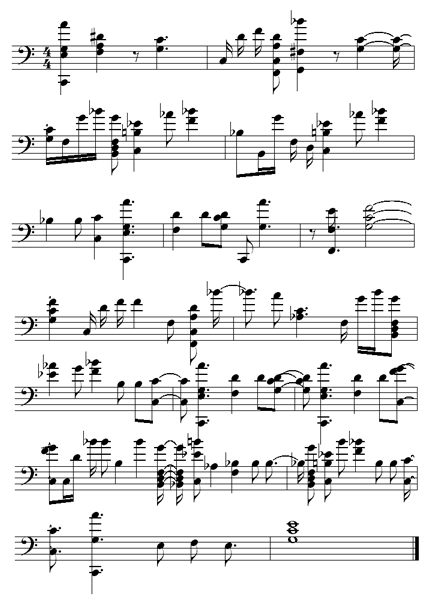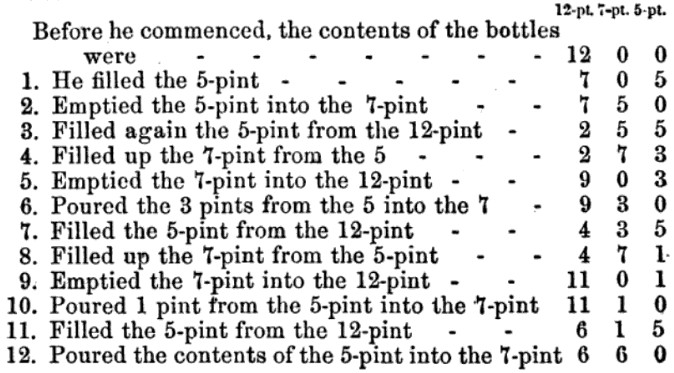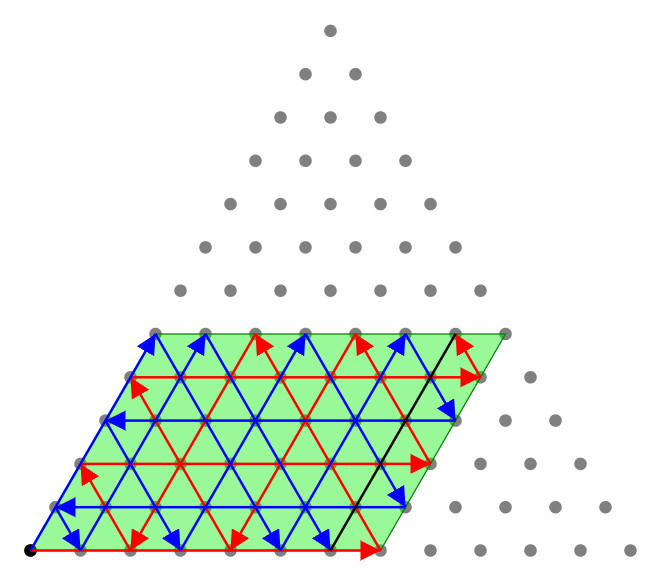If all four equations are satisfied, then multiplying all four equations together will produce another valid equation. We obtain:
a7 × b6 × c5 × d4 × e3 × f2 × g = 2,677,277,333,530,800,000.
The number on the right factors into prime powers as 2,677,277,333,530,800,000 = 27 × 36 × 55 × 74 × 113 × 132 × 17, as can be determined by trial division by the small primes 2, 3, 5, 7, 11, 13, and 17, for instance. So we have the new equation:
a7 × b6 × c5 × d4 × e3 × f2 × g = 27 × 36 × 55 × 74 × 113 × 132 × 17.
If p is any prime dividing a, then p7 divides the right hand side. Since only 2 appears to the seventh power, the only value p can take is 2. Since a must be greater than 1, we see that 2 must divide a. Because 2 appears to exactly the seventh power on the right, we see that a = 2. Canceling a7 on the left with 27 on the right leaves:
b6 × c5 × d4 × e3 × f2 × g = 36 × 55 × 74 × 113 × 132 × 17.
Repeating the same argument shows that b = 3, c = 5, d = 7, e = 11, f = 13, g = 17 is the unique solution to the new equation. However, it is still necessary that these values actually satisfy the original four equations, which in fact they do as can be checked easily. (To see why this last step is necessary, try using the same reasoning on the equations: x = 10, y2 = 9, z3 = 25, which clearly has no solutions in integers.)
10/20/2025 UPDATE: A number of readers point out that this yields pretty readily to standard solution. Simon Loria writes:
If you factor Eq 1 (a relatively easy task) you get 22 × 3 × 52 x 17. Even if you don’t identify the sequence at this point (17 being the 7th (gth) simple prime), knowing a & c allows you to confirm a = 2 & c = 5 and solve for d in Eq 3. This in turn allows you to solve for e in Eq 4 and f in Eq 2.
And Catalin Voinescu writes:
The fourth equation isn’t even necessary. It makes the clever solution
possible, but you can approach this more directly and get there quicker,
with arithmetic that fits on a pocket calculator.
a2 * b * c2 * g = 5100 = 22 * 3 * 52 * 17
The right-hand side can be written as a product of at most six factors
that are greater than 1, and the left-hand side is a product of six
factors that are greater than 1, so each factor on the left corresponds
to one on the right. The repeated ones are a and c on the left and 2 and
5 on the right, so a and c must be 2 and 5 (not necessarily in this
order); b and g must be 3 and 17 (again, not necessarily in this order).
a * b2 * e * f2 = 33462 = 2 * 32 * 11 * 132
Same logic tells us a and e are 2 and 11, and b and f are 3 and 13.
Using both results, a = 2, so c = 5, e = 11; and b = 3, thus g = 17, f = 13.
Finally, from
a * c2 * d3 = 17150 = 2 * 52 * 73
we immediately get d = 7, using the same argument, or even simply
plugging in a = 2, c = 5 and solving for d. All seven values are now
known. The fourth equation is redundant.
Even if you follow the given solution, if you multiply the numbers and
only then decompose the large number into prime factors, you’re doing
way more work than if you factor the four smaller numbers first…
(Thanks to both.)







